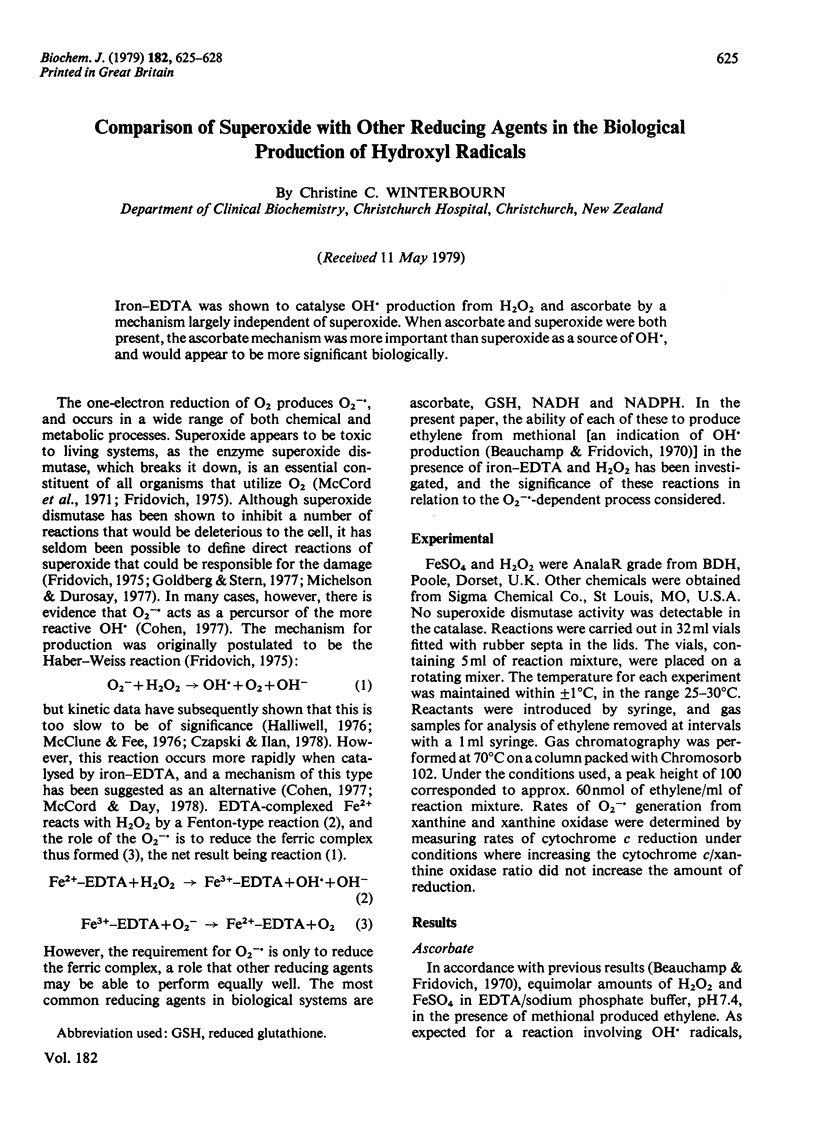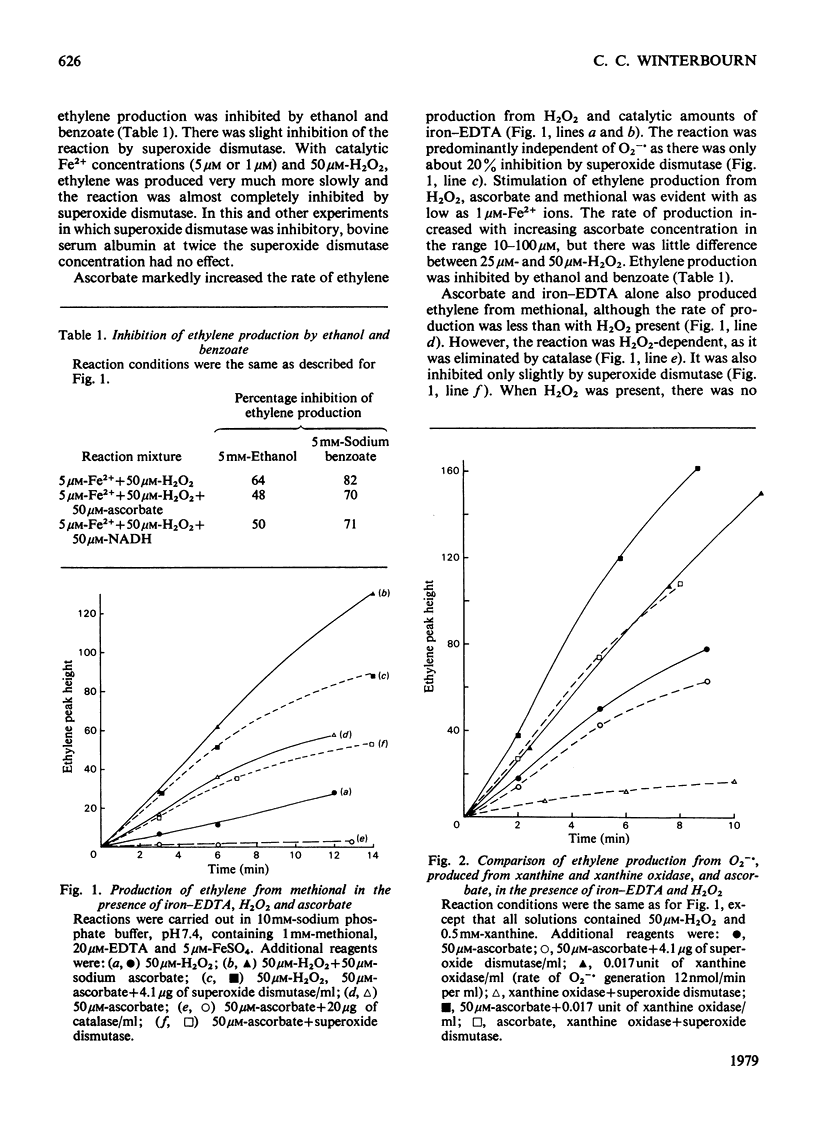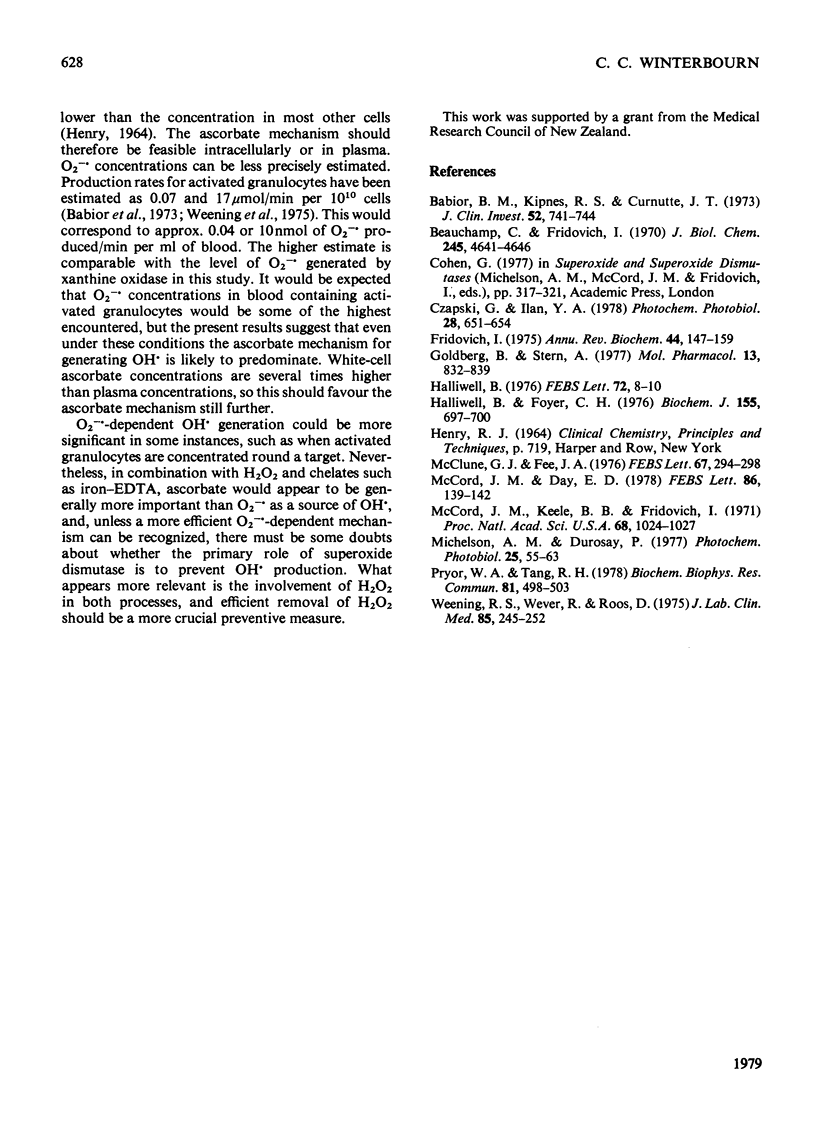Abstract
Iron--EDTA was shown to catalyse OH. production from H2O2 and ascorbate by a mechanism largely independent of superoxide. When ascorbate and superoxide were both present, the ascorbate mechanism was more important than superoxide as a source of OH., and would appear to be more significantly biologically.
Full text
PDF



Selected References
These references are in PubMed. This may not be the complete list of references from this article.
- Babior B. M., Kipnes R. S., Curnutte J. T. Biological defense mechanisms. The production by leukocytes of superoxide, a potential bactericidal agent. J Clin Invest. 1973 Mar;52(3):741–744. doi: 10.1172/JCI107236. [DOI] [PMC free article] [PubMed] [Google Scholar]
- Beauchamp C., Fridovich I. A mechanism for the production of ethylene from methional. The generation of the hydroxyl radical by xanthine oxidase. J Biol Chem. 1970 Sep 25;245(18):4641–4646. [PubMed] [Google Scholar]
- Fridovich I. Superoxide dismutases. Annu Rev Biochem. 1975;44:147–159. doi: 10.1146/annurev.bi.44.070175.001051. [DOI] [PubMed] [Google Scholar]
- Goldberg B., Stern A. The mechanism of oxidative hemolysis produced by phenylhydrazine. Mol Pharmacol. 1977 Sep;13(5):832–839. [PubMed] [Google Scholar]
- Halliwell B. An attempt to demonstrate a reaction between superoxide and hydrogen peroxide. FEBS Lett. 1976 Dec 15;72(1):8–10. doi: 10.1016/0014-5793(76)80801-0. [DOI] [PubMed] [Google Scholar]
- Halliwell B., Foyer C. H. Ascorbic acid, metal ions and the superoxide radical. Biochem J. 1976 Jun 1;155(3):697–700. doi: 10.1042/bj1550697. [DOI] [PMC free article] [PubMed] [Google Scholar]
- McClune G. J., Fee J. A. Stopped flow spectrophotometric observation of superoxide dismutation in aqueous solution. FEBS Lett. 1976 Sep 1;67(3):294–298. doi: 10.1016/0014-5793(76)80550-9. [DOI] [PubMed] [Google Scholar]
- McCord J. M., Day E. D., Jr Superoxide-dependent production of hydroxyl radical catalyzed by iron-EDTA complex. FEBS Lett. 1978 Feb 1;86(1):139–142. doi: 10.1016/0014-5793(78)80116-1. [DOI] [PubMed] [Google Scholar]
- McCord J. M., Keele B. B., Jr, Fridovich I. An enzyme-based theory of obligate anaerobiosis: the physiological function of superoxide dismutase. Proc Natl Acad Sci U S A. 1971 May;68(5):1024–1027. doi: 10.1073/pnas.68.5.1024. [DOI] [PMC free article] [PubMed] [Google Scholar]
- Michelson A. M., Durosay P. Hemolysis of human erythrocytes by activated oxygen species. Photochem Photobiol. 1977 Jan;25(1):55–63. doi: 10.1111/j.1751-1097.1977.tb07424.x. [DOI] [PubMed] [Google Scholar]
- Pryor W. A., Tang R. H. Ethylene formation from methional. Biochem Biophys Res Commun. 1978 Mar 30;81(2):498–503. doi: 10.1016/0006-291x(78)91562-0. [DOI] [PubMed] [Google Scholar]
- Weening R. S., Wever R., Roos D. Quantitative aspects of the production of superoxide radicals by phagocytizing human granulocytes. J Lab Clin Med. 1975 Feb;85(2):245–252. [PubMed] [Google Scholar]


